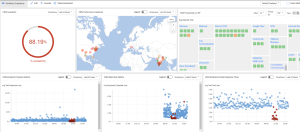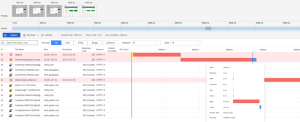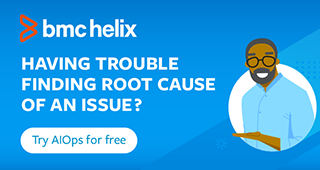Synthetic monitoring has many different names: End to end, response time, robotic, end user perspective, digital experience monitoring and more. Despite the many different names, we are aligning and defining the term synthetic monitoring as the ability to capture the success and timings of a scheduled test that simulates a user interacting with a remote service. Synthetic monitoring can automatically monitor and test application availability and performance across production and development environments so you can fix issues and optimize digital experience before users are affected.
The idea is to answer the most important question, “Is my service available and does it perform to the expectations of my end users?” It’s a simple question, but only synthetic monitoring can answer it for certain. All the other observability components answer different questions and tell you whether your service is available, but they won’t be 100 percent correct all the time.
When do you need synthetic monitoring?
If you deliver services that have a multi-tier architecture and a web front end to internal or external users, then you must have synthetic monitoring as your first monitor. It will alert you when users cannot not interact with your service and proactively reduces the risk of a service impact.
Depending on how detailed your test is, synthetic monitoring can provide leading indicators about the root cause of an issue. Synthetic tests can differ from a simple URL check to alert when the web user interface (UI) is not responding, up to multi-step transactional tests to validate that you can log in, access an e-commerce shop, add dummy items to the shopping cart, and finish the checkout. If your payment system has a problem, then the synthetic test only fails once you go to the checkout process to pay. However, synthetic monitoring does not tell you why the payment system failed or alert you proactively if resources are at maximum capacity. This is where BMC Helix for Observability and Artificial Intelligence for IT Operations (AIOps) can help, providing you with predictive alerting and root cause analysis.
What challenges can synthetic monitoring solve?
Many companies are on a digital transformation journey, deploying new internal web-based services and implementing software-as-a-service (SaaS) solutions that reside on several cloud platforms. To avoid unpredictable and costly outages, you need a solution that is easy to use, fast to deploy, and can scale for your business.
When it comes to end users interacting with your web services, a poor or frustrating experience can cost you through loss of sales, loss of reputation, and brand issues. To stay ahead of these issues, synthetic monitoring allows you to monitor from where it matters and to gain full visibility into the metrics that are mission-critical for your business.
How does it work ?
Catchpoint Synthetic Monitoring is a SaaS solution with over 2,000 vantage locations around the world that makes it easy to run synthetic tests from your customer locations at scale. It has the ability to deploy agents (enterprise nodes) to the customer-owned hardware on-premises or in a private cloud for internal testing. No other vendor has more out-of-the-box test types to support modern technologies, leveraging JavaScript and Selenium to make your API or muti-transactional test as simple as a URL check.

Figure 1. Catchpoint Synthetic Monitoring dashboard.
What are the combined benefits of the BMC Helix platform and Catchpoint Synthetic Monitoring?
BMC Helix for Observability and AIOps is a SaaS solution purpose-built for performance and scalability. The BMC Helix platform leverages hundreds of micro-services, has a shared data lake, operates as an open platform, can ingest data from multiple sources, and has a Catchpoint connector. By ingesting Catchpoint’s synthetic data into the BMC Helix platform, we are now able to give customers a complete solution where synthetic information can be used in tandem with infrastructure, application performance monitoring (APM), AIOps, or network data.
BMC Helix will alert you that the database has slow transactions, seeing the increased response time of the related web UI and pointing you to the root cause of a congested storage system using its own AIOps. Synthetic monitoring can also enrich your service models using response time as a health indicator for your business service dashboards. Catchpoint can also provide value in combination with the BMC Helix platform, using AI and machine learning (ML) to not only point to the root cause but also predict service failures by:
- Resolving incidents before they impact your business
- Gaining deep and broad visibility into the internet stack
- Providing alerts on key uptime, performance, or reachability criteria
- Offering AI-powered smartboards with drilldown capabilities

Figure 2. Detailed Catchpoint Monitoring transaction view.
Want to learn more? Please click here to learn more about the benefits of synthetic monitoring.







